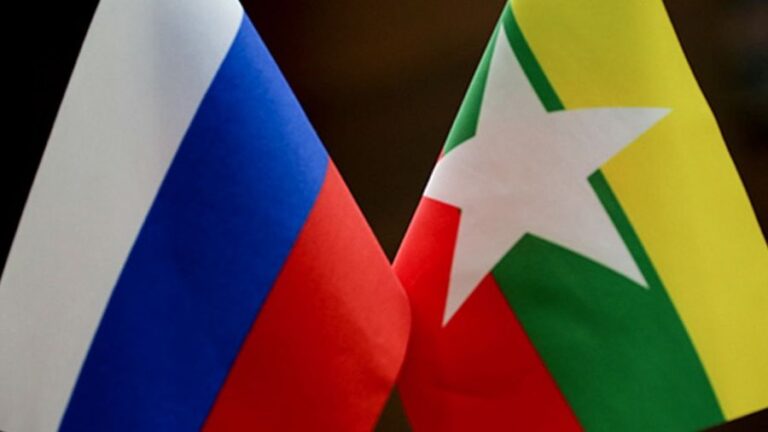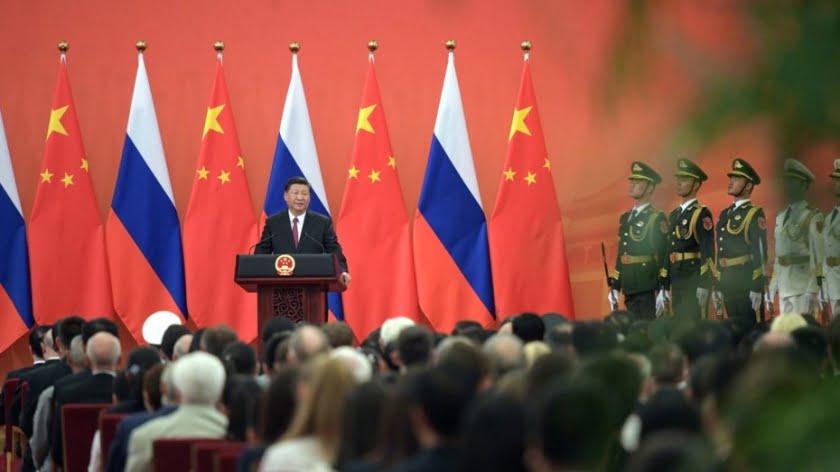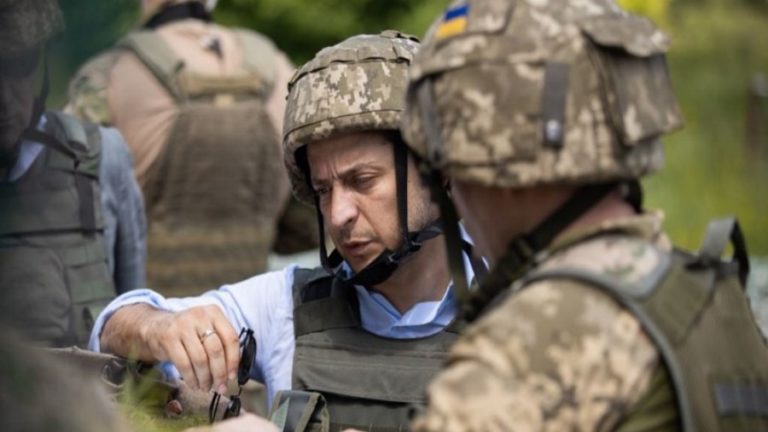Political Issues of the Blue Nile
Due to the COVID-19 pandemic, which without warning began ravaging our planet, some important issues have been put on hold. However, they will have to be resolved sooner or later. One of them is the water scarcity problem. In fact, some scientists and experts believe that it may lead to wars, which could cause more deaths than the Coronavirus pandemic. It is common knowledge that the continuous growth of the world population has resulted in an ever increasing demand for water and its shortages. This has, in turn, caused, a decline in living standards and slower economic growth in countries suffering from water scarcity.
The issue is especially acute for Ethiopia, Sudan and Egypt due to the conflict over distribution of the Nile’s water supply. The Blue Nile flows from Ethiopia to Sudan where it joins the White Nile (not far from the capital city of Khartoum) to form the main Nile. Originating in Ethiopia, the Blue Nile is one of the two major tributaries of the Nile and contributes about 85 percent of its waters. Herodotus, a Greek historian, called ancient Egypt “the Gift of the Nile”.
The Grand Ethiopian Renaissance Dam (GERD, also referred to as Hidase) on the Blue Nile river in Ethiopia has been under construction since 2011. Experts believe that its launch will inevitably lead to water shortages in Sudan and Egypt, located downstream. The three countries have already held more than a dozen meetings from the start of construction in order to resolve issues with water distribution once the new dam is launched. But differences in opinions remain.
According to local media outlets, more than 70 % of the work on the dam (meant to be the largest hydroelectric power project in Africa) has been completed. The plan is to finish the construction by 2023. At the beginning of March 2020, Ethiopia’s Minister of Foreign Affairs Gedu Andargachew announced that the filling of the dam would begin in July, with 4.9 billion cubic meters (BCM) of Nile waters to be stored in the reservoir by the end of that month. According to the official, electricity generation will start in February – March 2021. A key issue in the three-way negotiations concerns the speed at which the reservoir of the dam is to be filled. Its total capacity is equivalent to 74 BCM. Egypt has proposed doing so over a longer period, i.e. 10 years. Ethiopia is planning on filling it in six years. In fact, if it decided to fill the reservoir in just 3 years, 25 BCM would be deducted from the water supply to Egypt and Sudan per year. And this could lead to droughts and harvest failures in the two countries.
On Egypt’s invitation, the United States became involved in the three-way talks among Egypt, Sudan and Ethiopia on complex GERD-related issues. However, Ethiopia chose to skip the round of U.S.-brokered negotiations, held in February in Washington DC. Voice of America reported that “the announcement came amid widespread concerns in Ethiopia that its delegation” had been pressured by the US to reach a deal on the dam. “Ethiopia will never sign on an agreement that will surrender its right to use the Nile River,” the Ethiopian ambassador to the United States tweeted.“There was lots of discomfort recently due to the behavior and changing role of the U.S. among policy makers in Ethiopia,” political analyst Abel Abate Demissie from Ethiopia said.
However, the Egyptian side signed a draft agreement on the dam in late February despite Ethiopia’s absence at the talks. Egypt’s Foreign Ministry spokesman said that Egypt “remained committed to the negotiation track … according to what was agreed upon by the three countries”. Officially, Ethiopia’s Ministry of Water, Irrigation and Energy stated that their side would not attend the talks in Washington because the country’s delegation had not “concluded its consultation with relevant stakeholders”. During a video meeting in May, Prime ministers of Sudan and Ethiopia agreed to resume the three-way negotiations on the filling and use of the GERD.
In recent months, the escalating conflict has led to a war of words between Cairo and Addis Ababa. Egypt has even urged the UN Security Council to intervene in the ongoing dispute. Ethiopia hopes that the US $4.8 billion project on the Blue Nile will help it become a major power exporter in Africa. Each year, Egypt takes 55.5 BCM of water from the Nile (mostly stored in the Aswan High Dam reservoir). However, the nation actually needs more than 80 billion cubic meters annually. To meet the demand, the country “recycles water several times and uses treated and untreated drainage water”. Egypt is concerned that once the GERD is completed, it will receive less water from the Nile river, the nation’s main source of freshwater. According to Egyptian officials, currently, the individual share of water is 570 cubic meters (CMs) per year in this highly populated nation. And a country is said “to be facing water scarcity if supplies drop below 1,000 CMs per person annually”. By 2025, the figure “is expected to drop to 500 cubic meters”.
Events are unfolding at a rapid pace as July draws near, the month when Ethiopia is scheduled to start filling the reservoir of the Grand Ethiopian Renaissance Dam. Addis Ababa continues to insist that it has the right to act unilaterally. It remains indifferent to legitimate concerns expressed by Cairo and Khartoum about technical aspects of the dam’s operation and the filling of its reservoir, and about GERD’s environmental and economic consequences as well as measures that need to be taken in order to avert possible crises in downstream countries at some point in the future. Egypt has appealed to the international community via the UN Security Council by expressing its disappointment about Ethiopia’s refusal to sign the agreement with Cairo and Khartoum after the US-brokered talks collapsed.
Running counter to joint efforts made by Egypt and Sudan, Ethiopia’s strategy during the negotiations over the existential matter for Cairo stems from Addis Ababa’s desire to establish complete and unilateral control over the Blue Nile, Egypt’s main source of freshwater. Its intentions are evident from the fact that Addis Ababa has refused to abide by one of the key provisions of the UN Watercourses Convention (the Convention on the Law of Non-Navigational Uses of International Watercourses), i.e. the obligation of each UN member state to provide information to other nations sharing a water resource “about the condition of the watercourse and about their planned uses for it”. In the event the countries perceive the plan to be harmful, the UN Convention “requires member states to negotiate a mutually acceptable solution”.
“After months of deadlock”, Ethiopia’s Minister of Water, Irrigation and Energy and Sudanese and Egyptian ministers of water resources and irrigation resumed the talks, with observers from the US, the European Union and South Africa (the current head of the African Union) in attendance. Al Jazeera’s report said Sudanese ministry officials stated that the negotiations “focused on technical matters regarding the dam’s operation and the filling of its massive reservoir during rainy seasons and droughts”. According to Sudan’s Ministry of Irrigation and Water Resources, “it would draft a paper, based on Egyptian and Ethiopian notes”. Al Jazeera also wrote that Egypt’s Ministry of Water Resources and Irrigation said “the June 9-13 talks revealed the differences that remain with Ethiopia”. The issues “included Ethiopia’s ‘total’ rejection of addressing technical issues related to mitigation measures for droughts and prolonged droughts and measures to address prolonged dry years,” according to the ministry statement. It also said Ethiopia rejected “the inclusion of a legally binding dispute resolution mechanism”. “Egypt reaffirmed that these are essential components in any agreement that relates to an existential matter that affects the lives of over 150 million citizens of Egypt and Sudan,” the statement continued.
Spokesperson for Egypt’s Ministry of Water Resources and Irrigation Mohamed el-Sebaei said “Ethiopia rejected a Sudanese proposal” that could have become “a basis for negotiations between the three countries”. Al Jazeera wrote that instead, “Addis Ababa introduced a ‘worrisome’ proposal that included its vision on the dam’s operation”. The spokesman said that “Ethiopia lacked the political will to compromise” and wanted “Egypt and Sudan to abandon their water rights and to recognize Ethiopia’s right to use the Blue Nile waters unilaterally and to fill and operate the Renaissance Dam in accordance with its vision”. “The proposal is not legally and technically sound,” he told reporters in Cairo, “It is a clear attempt to impose a fait accompli on my downstream country”.
A solution to the vast disagreements over the Blue Nile waters seems obvious. Under the guise of exercising its sovereign right to use its natural resources as it sees fit, Addis Ababa believes that the dam can be used to control how much water reaches downstream countries. One does not need to be an expert on international law to understand the dated and misleading nature of the arguments being used by Ethiopia. The Blue Nile does not belong to any one country, it is an international waterway, which is jointly used by the nations located along its banks. These UN member states have rights, recognized by the aforementioned international Convention, to ensure hydro power projects, initiated by other nations, are not perceived to be harmful to their interests. That is why the treaty requires that not only are surveys and investigations of the proposed hydro power project site carried out, but also that research is conducted into economic, social and environmental consequences of operating such a plant. Based on such studies, necessary measures can then be taken to protect the rights of all the parties affected by the project and to ensure necessary mechanisms of compensation are in place in the event of any harm caused.
By Viktor Mikhin
Source: New Eastern Outlook







